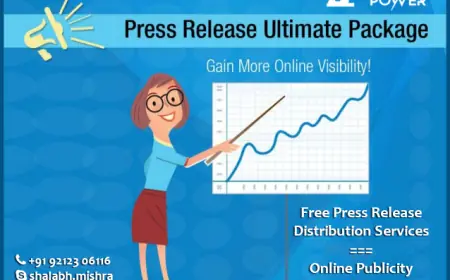Loan Brokers vs Direct Application in the Philippines: Which is Right for You
In the Philippines' complex financial landscape, loan brokers serve as intermediaries between borrowers and multiple lending institutions. These professionals specialize in matching borrowers with appropriate lenders based on their financial profiles and needs.
The Role and Value of Loan Brokers
In the Philippines' complex financial landscape, loan brokers serve as intermediaries between borrowers and multiple lending institutions. These professionals specialize in matching borrowers with appropriate lenders based on their financial profiles and needs.
Loan brokers in the Philippines operate under regulatory oversight from the Bangko Sentral ng Pilipinas (BSP), which requires them to maintain transparency in their operations and fee structures. According to BSP Circular No. 1048, financial service providers must disclose all fees and charges to protect consumers from hidden costs.
The primary value proposition of loan brokers lies in their market knowledge and relationships with multiple lenders. A qualified Filipino broker typically has access to dozens of lending institutions, from traditional banks to alternative lenders, allowing them to shop around for the best terms on your behalf.
"Para sa mga Pinoy na hindi pamilyar sa lending landscape, ang broker ay parang financial tour guide," explains Maria Santos, a financial analyst in Manila. This personalized guidance is particularly valuable for first-time borrowers or those with complicated financial situations.
Pros and Cons of Direct Applications
Direct loan applications involve approaching lending institutions without intermediaries. This traditional approach remains popular among many Filipinos, especially those with established banking relationships.
Advantages of Direct Applications:
-
No broker fees: Direct applications eliminate the commission typically paid to brokers, which can range from 1-5% of the loan amount in the Philippines.
-
Relationship building: Establishing a direct relationship with a bank can lead to preferential rates on future loans. The BSP's Financial Consumer Protection Framework encourages this relationship-based approach to lending.
-
Streamlined process: For simple loan products with standard requirements, direct applications can sometimes be processed more quickly, especially with digital banking platforms now available in the Philippines.
Disadvantages of Direct Applications:
-
Limited options: When applying directly, borrowers can only access products from that specific institution, potentially missing better offers elsewhere in the market.
-
Time-consuming research: Without a broker's guidance, borrowers must independently research multiple lenders, which can be challenging given the diverse lending landscape in the Philippines.
-
Less negotiating power: Individual applicants typically have less leverage when negotiating terms compared to brokers who bring regular business to lenders.
Cost and Convenience Comparison
The cost differential between using a broker versus direct application varies significantly based on loan type, amount, and individual circumstances.
Cost Considerations:
In the Philippines, broker fees typically range from 1-5% of the loan amount, though these are often offset by the savings secured through better rates. According to data from the BSP, broker-facilitated loans sometimes offer interest rates 0.5-2% lower than average direct application rates, potentially saving borrowers significant amounts over the loan term.
For example, on a ₱2 million home loan with a 15-year term, a 1% reduction in interest rate could save approximately ₱180,000 over the life of the loan, easily justifying a broker's fee.
Convenience Factors:
Time efficiency represents another crucial consideration. The average Filipino borrower spends approximately 15-20 hours researching and applying for loans directly, while broker-assisted applications typically require only 3-5 hours of the borrower's time.
This convenience factor is particularly valuable for OFWs (Overseas Filipino Workers) who may have limited time and access to visit multiple banks when home on short visits. As mandated by Republic Act No. 10870 (Filipino Identification System Act), loan applications require in-person verification, making the time-saving aspect of brokers especially valuable.
PersonalLoan.ph's Unique Value as a Loan Marketplace
PersonalLoan.ph represents a hybrid model in the Philippine lending ecosystem, functioning as a digital loan marketplace that combines elements of traditional broking with technological innovation.
Unlike conventional brokers who may represent a limited number of lenders, PersonalLoan.ph provides access to a comprehensive network of over 30 licensed lending institutions across the Philippines, from major banks to specialized lenders focusing on specific borrower profiles.
The platform's algorithm-driven matching system complies with BSP Circular 1048 on technology risk management, ensuring secure data handling while efficiently connecting borrowers with suitable lenders based on their financial profiles.
"Ang PersonalLoan.ph ay nagbibigay ng transparency sa mga Pinoy borrowers," notes financial technology expert Ramon Reyes. "Hindi na kailangang pumunta sa iba't ibang bangko para makakuha ng magandang deal."
The marketplace model eliminates traditional broker commissions, instead generating revenue through lender partnerships, allowing borrowers to access broker-level benefits without additional fees. This aligns with the BSP's financial inclusion initiatives aimed at making financial services more accessible to all Filipinos.
Making Your Decision
When deciding between using a loan broker or applying directly in the Philippines, consider these key factors:
-
Loan complexity: For specialized loans like business expansion financing or non-traditional income documentation, brokers typically provide more value.
-
Time constraints: If you have limited time to research and visit multiple lenders, a broker or platform like PersonalLoan.ph can significantly streamline the process.
-
Existing banking relationships: If you have a strong relationship with a bank offering competitive rates, direct application may be advantageous.
-
Financial knowledge: Your familiarity with loan products and confidence in negotiating terms should influence your decision.
The Philippine loan market continues to evolve, with digital platforms increasingly bridging the gap between traditional broking and direct applications. Whether you choose a broker, direct application, or a hybrid marketplace model like PersonalLoan.ph, understanding the advantages and limitations of each approach will help you secure financing that best meets your needs while complying with the consumer protection frameworks established by the BSP.
What's Your Reaction?
 Like
0
Like
0
 Dislike
0
Dislike
0
 Love
0
Love
0
 Funny
0
Funny
0
 Angry
0
Angry
0
 Sad
0
Sad
0
 Wow
0
Wow
0
















































